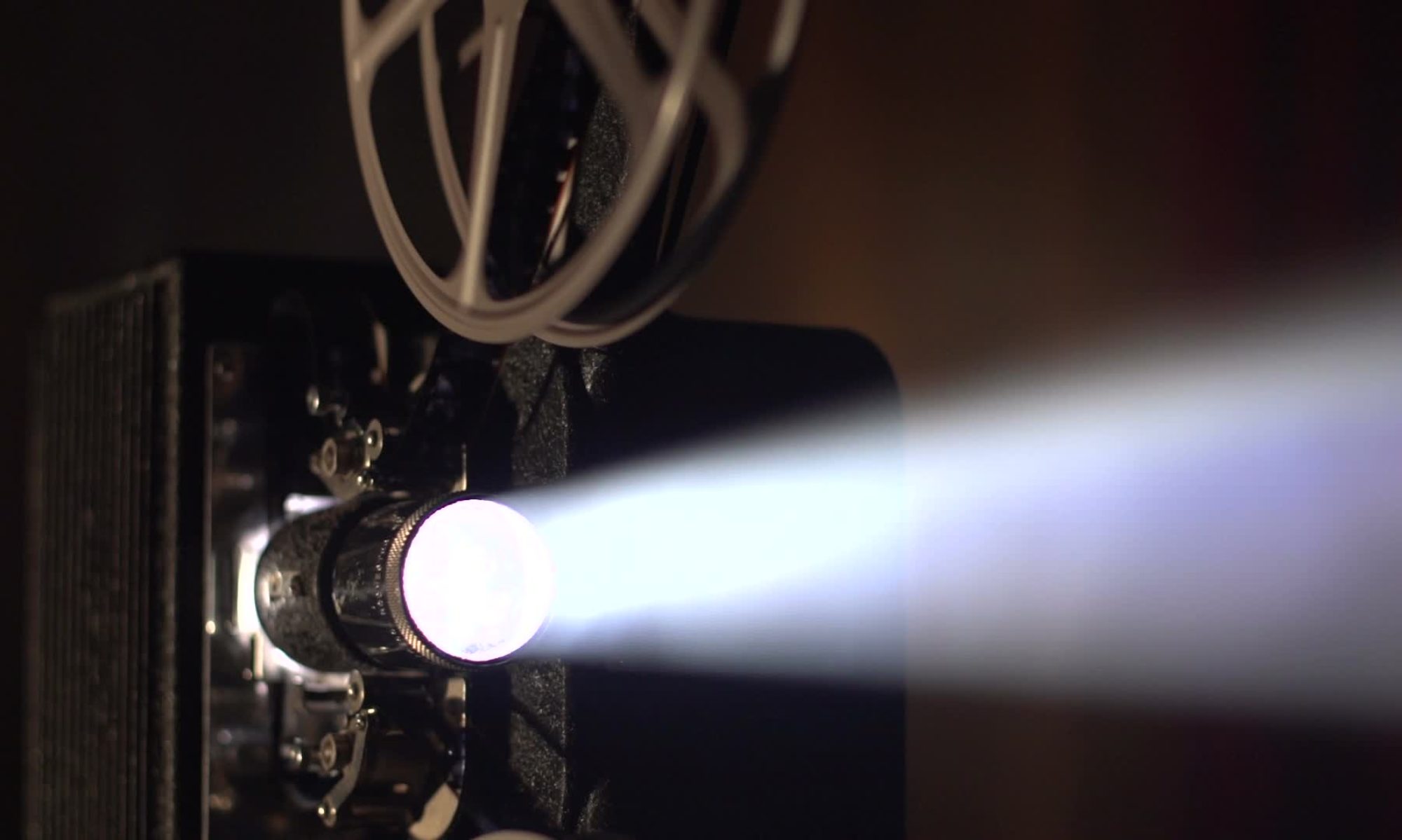
The White Buffalo is a film that, like so many others, I stumbled across by accident. I was actually looking for movie posters to reference for a drawing project I was working on at the time, and was so intrigued by this one that I had to look deeper into the film. Unfortunately, The White Buffalo is not a movie that gets a lot of attention, even on obscure internet forums.
Even so, after seeing the trailer, I decided to give it a chance and ordered a copy of the Blu Ray from Amazon. When it arrived, I was expecting a mildly entertaining Moby Dick style creature feature set in the wild west. To my surprise, that’s not what I got.
What is The White Buffalo?
In the mid/late seventies, after the surprise success of Stephen Spielberg’s masterpiece Jaws, there was something of a creature feature boom. Every studio was releasing a beasts run amok film to cash in on a killer-beast-hungry audience. Prolific producer Dino De Laurentiis was no different, releasing three such films in the span of two years. King Kong is the most well known, Orca is probably the most despised (undeservedly I think) while The White Buffalo, the last to be released of the tree, is the one that tends to fall between the cracks. That’s a real shame, since it’s easily the best of the bunch.
The White Buffalo was released in May of 1977 on a small budget of $6 million to mostly negative reviews from critics and audiences alike. I haven’t been able to find any box office figures for the film but most seem to regard it as a financial and critical failure.
What is The White Buffalo About?
Set in 1974, The White Buffalo follows real life western legend Wild Bill Hickok. The famous gunslinger and Indian slayer is beginning to cave to old age, and has been haunted by a terrifying dream that he is being attacked by a mysterious “White Spike” (buffalo). Hickok fears nothing “except being afraid,” and has finally decided to confront his fears and, under a different identity and claiming to search for riches in the Black Hills, hunt the beast down before his terror drags him into madness. However, old enemies await him at every turn.
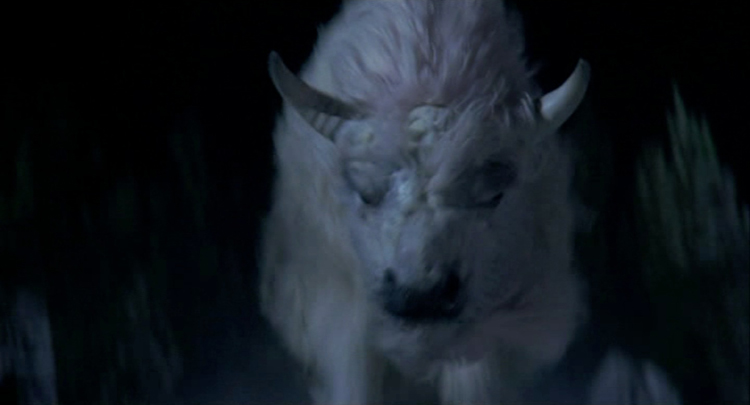
On the other hand, the same White Buffalo has attacked and massacred the Lakota tribe, killing the infant daughter of Crazy Horse, the tribe’s war chief. According to their beliefs, if her body is not wrapped in the pelt of the buffalo, her soul will be forever tormented in hell. Losing his title, and taking on the name of Worm, Crazy Horse sets out to hunt the White Buffalo down and will not tolerate anyone or anything that gets in his way.
What Happens in The White Buffalo?
Though both Crazy Horse and Hickok are main characters in the story, and both are hunting the White Buffalo down for their own reasons, the gunslinger is the character from whose perspective most of the story takes place, with Crazy Horse only really shown on screen when he and Hickok’s paths cross. Normally this kind of thing would bother me but it works in this case. Wild Bill Hickok is never shown as the better of the two characters (if anything they are shown as equals) but is simply our narrator for the events, with Crazy Horse generally moving stealthily about, and only being visible when he has to or wants to be.
What I will say of is that the viewer will get much more out of The White Buffalo if they are familiar with the actual historical figures being portrayed. Wild Bill Hickok, as stated before, was a very renowned gunslinger and killer of men (particularly “injuns”) who gained a reputation for never shooting anyone in the back. He was openly hostile to Native Americans, at one point claiming that “I’ve never met a good indian who wasn’t dead.” One particularly infamous case was when he killed Whistler the peacemaker, who was attempting to unite the Black Hill tribes against the white man’s invasion and settlement therein, with a long range rifle.
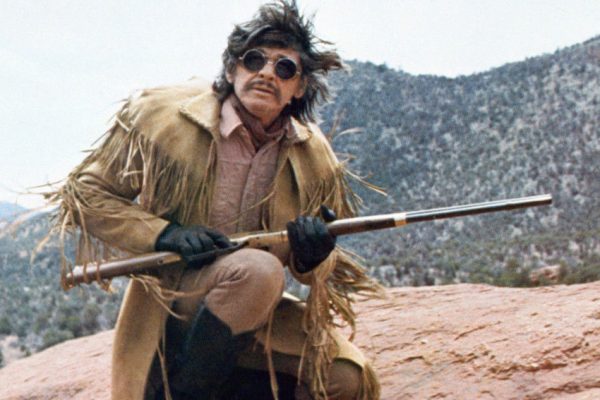
Crazy Horse, on the other hand, was a very successful war chief who earned respect from both his people and his enemies. He participated in several battles on the Lakota’s behalf against the white settlers and invaders and was viciously opposed to the “civilization” that they were claiming to bring, wishing to preserve the Lakota people’s traditional land and way of life. Though, to my knowledge (I don’t know very much about the history of the wild west) these two never met in real life, I can only imagine that the two of them would have had a hostile view of one another (albeit perhaps with respect).
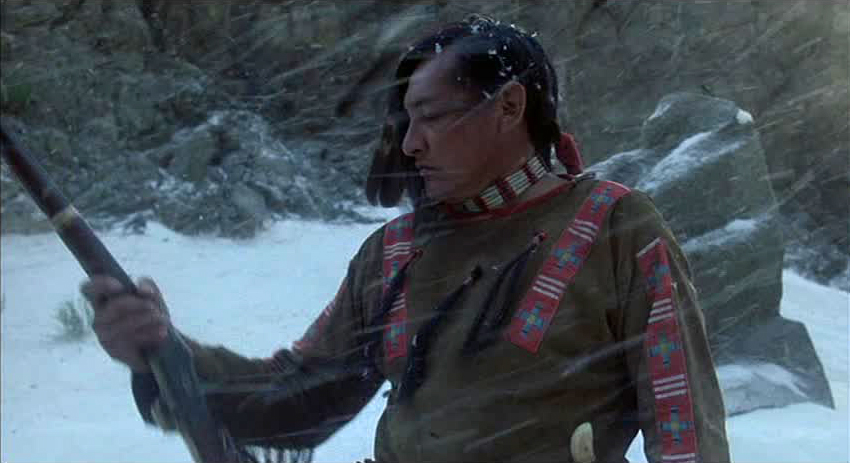
In essence, that’s really what the White Buffalo is about. The beast itself is really just a backdrop, or a justification, for these two historical figures who, given the context we have, basically represent the extremes of there particular side in the White Setter vs Native American conflict during the early parts of US History. That’s what I found so fascinating about it. Hickok is a bigot, and is portrayed rather blatantly as such throughout the film, but the viewer still comes to respect and, in a way, pity him throughout the film. The demons he is dealing with are of his own creation, but they are still a lot to bear.
Crazy Horse, on the other hand, is portrayed as very noble and great, but is also portrayed in a very tragic light. Much of the film has to do with Crazy Horse and Hickok coming to see each other as equals and brothers, and growing to respect and understand one another. But Crazy Horse is also shown as being unable or unwilling to truly forgive Hickok for his past deeds.
Wild Bill Hickok is played by none other than Charles Bronson, with The White Buffalo being his last major role in a western. Crazy Horse, on the other hand, is portrayed by Will Sampson, who was known for playing similar roles throughout the 1960s and 70s. Both of them turn out solid performances for the most part, especially in the scenes where the two of them are forced to interact. These scenes really carry the film, so it’s great that they handle the material seriously and effectively convey their characters’ views and motives. I say “for the most part” because, early in the film, there are a few moments when the actors don’t seem to be giving it there all or another take might have been called for. However, that’s only really an issue in the first few minutes, and it quickly passes.

Onto the White Buffalo itself, you really don’t see much of it until the film’s climax. That’s not terribly unusual for a film in the creature feature genre but it’s a little extreme here. Granted, much of that is because, again, the film is more focused on Hickok and Crazy Horse’s interactions and coming to grips with one another than on being a monster movie; because of that, gore hounds or people coming into this expecting “jaws in the west” may be disappointed. It just isn’t that kind of film (in spite of what the trailer might have you believe). That’s not to say the film is boring, mind you. There are well timed gunfights spliced in where they are needed to keep the plot lively. It’s just a shame that the Buffalo itself isn’t physically present outside of the first and last 10 minutes or so of the movie.
Even so, the White Buffalo itself certainly has presence to it and is effectively handled. Most of the time, it is either relegated to surreal dream sequences or is only shown in quick glimpses here and there, but the movie does an impressive job making the creature almost nightmarish. The thing just feels like a force of nature, and is surprisingly intimidating. Much of that is due to Carlo Rambaldi’s design work, the creature’s frightening roars and grunts, and John Barry’s brilliant score.

I almost struggle to consider The White Buffalo as a monster film, even though it has elements of that genre. The White Buffalo itself is definitely intimidating, and it is the final antagonist of the film, but the movie at a deeper level isn’t really about a giant white killer buffalo. To me, the buffalo is more symbolic, and serves to explain and embody the struggles that Hickok and Crazy Horse are encountering together. It is in this wise that the film get’s especially interesting for me, as there are many ways that the Buffalo itself can be interpreted, depending on the viewer and viewing. It could represent nature’s rage at the white man’s pillaging and destruction of it (Wild Bill Hickok and Buffalo Bill had a large part in the near extinction of the Buffalo) or it could represent the more sweeping concept of bigotry and white supremacy, or a dozen other things. However you look at it, The White Buffalo represents Wild Bill Hickok’s personal demons, and he is a big reason why the White Buffalo is such a problem in the first place. But he and Crazy Horse, the unwitting victim of his prior actions, must look past their prejudices against one another and work together if they have any chance of taking it down.
How are the Special Effects in The White Buffalo?
Special Effects in The White Buffalo are fairly limited, most of them being relegated to the White Buffalo itself. This is an area of the film that received a lot of criticism at the time of its release with many complaining that the buffalo was so obviously an animatronic. Personally, while I think the effects aren’t perfect, I don’t have the same negative view of them that some other reviewers do.
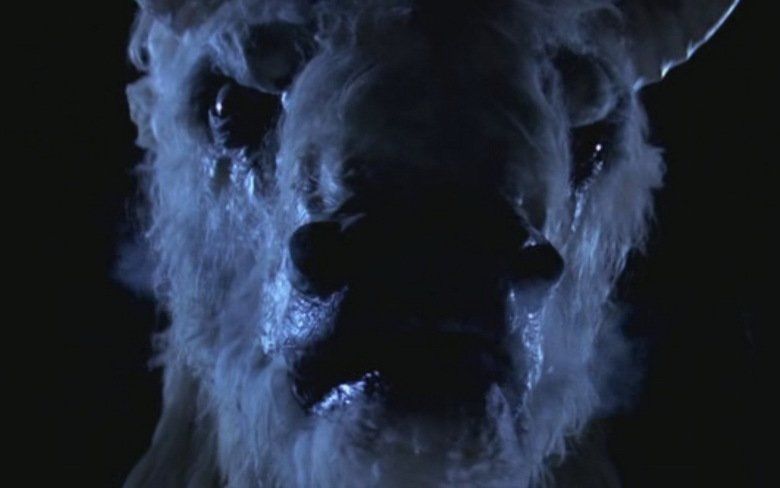
It’s no secret that I am a huge sucker for old-school-practical-effects, and that’s what The White Buffalo has to offer. Again, much of your feelings toward it will be determined by your opinion of Carlo Rambaldi’s design. It’s clear that realism and believably were not his top concern. What he wanted was to create an almost surreal, nightmarish beast, and I think the film and its effects accomplish that. It’s kind of hard to demonstrate with still images but, in the context of the scene, with quick shots and the eerie atmosphere and soundtrack, it really does work if your willing to forgive the occasionally obvious puppetry at work.
How is the Soundtrack in The White Buffalo?
I’ve already mentioned that John Barry’s score for The White Buffalo is truly fantastic. It’s one of those scores that just fits the tone of every scene perfectly, ranging from melancholy to downright eerie at times. Granted, it isn’t the type of score I would find myself listening to on its own all that often (final credits notwithstanding) but it blends into the film as it should and enhances the imagery on screen. In short, I think it’s great.
Is The White Buffalo a Good Movie?
I’m just going to be blunt here…I love this movie. The White Buffalo has quickly shot up to my Big 5 Movies (knocking Wizards off). What’s interesting is that I’m not a huge western fan. Don’t get me wrong, I can dig a good western; however, I usually watch them once, enjoy them, and never watch them again. The White Buffalo stays in my head though, and I find myself wanting to watch it again pretty often.
I can’t put my finger on the magic ingredient. Is it the film’s surreal tone? Is it the messages and symbolism it uses to illustrate them? Is it the historical context? Is it the buffalo itself?
The White Buffalo is not perfect. J. Lee Thompson’s directing, while it gets the job done, sometimes feels uninspired. This is a story and film that feels like it needed a director with more passion for the project instead of one who was just going through the motions. There is also the occasional odd edit or visual, or off line delivery early in the film (particularly from Will Sampson) that I wish had been ironed out or re-shot. Perhaps most glaringly, the final battle (while well shot) feels like it ends too quickly, and isn’t as satisfying as it really should have been. Again, this speaks to the “get it done” mentality of the director when the story and script deserved better treatment.
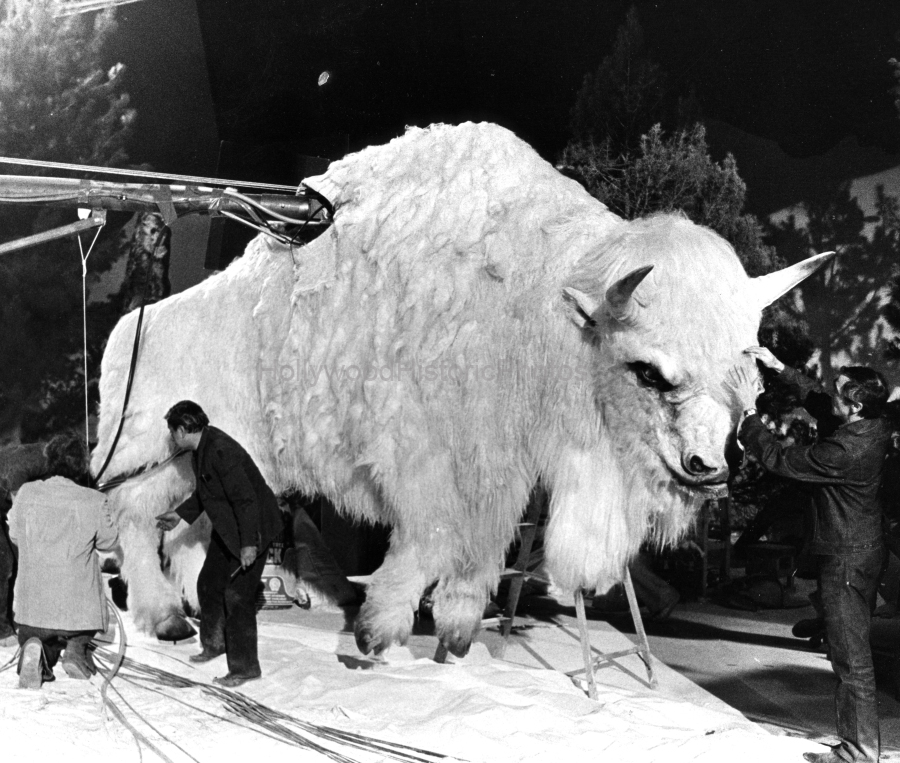
However, at the end of the day, The White Buffalo is still a fantastic film in my eyes. It’s problems are not major goofs, but just areas that keep the film from being a true hidden masterpiece. I’ll be the first to admit that The White Buffalo isn’t for everyone though. Some people might not like its surreal tone, or its slow pacing. Some might be disappointed at the titular creature’s limited screen time or body count. Some might be let down by an, admittedly rushed, final confrontation. But, when Hickok and Crazy Horse share their final almost tragic words before the credits role, that’s where the film really hit home for me.
This is a film that does not merit its obscurity. It deserves to be talked about, and there is an audience out there for it (I’m one of them). If you have even a passing curiosity, give it a chance. You, like me, might be surprised at the gem you find.
